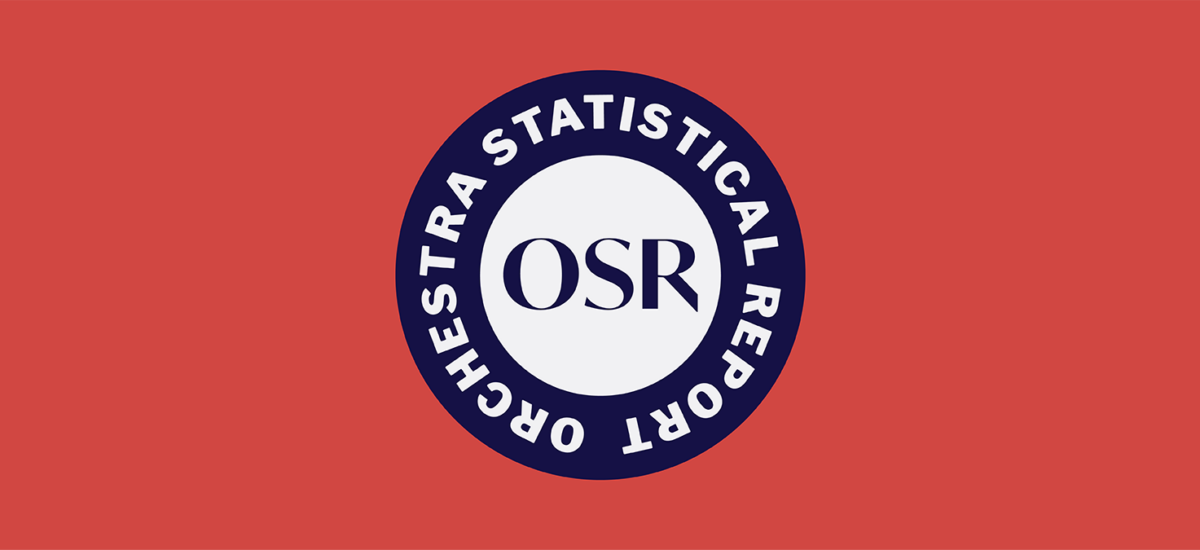
OSR: Orchestra Statistical Report
Related LinksThe Orchestra Statistical Report (OSR) is an annual report on key financial and operational metrics of orchestras. It reports on over 150 datapoints per orchestra and serves as an indispensable tool for board reporting, financial planning, and strategic decision-making.
The OSR is fuelled by a member-only survey and all participants receive a detailed benchmarking report and the opportunity for bespoke analyses tailored to their unique needs.
The League has been collecting data for the OSR since 1946, making it the largest and most comprehensive orchestra data set in the United States. Beyond its utility for individual orchestras, the OSR plays a pivotal role in the League’s advocacy efforts and facilitates a deeper understanding of broader trends shaping the financial landscape of the field.
The OSR presents data within 5 domains:
- Revenues (e.g., earned income, contributed income, investment income)
- Expenses (e.g., personnel expenses, fundraising expenses, program expenses)
- Balance sheet (e.g., assets and liabilities)
- Ticket sales (e.g., number of performances, total audience reached, free performances)
- Workforce (e.g., number of administrative staff, number of musicians, board size)
How to Access the OSR
All OSR participants receive the full benchmarking report and the opportunity for bespoke analyses tailored to their unique needs. For questions on how to access your report, contact Knowledge@americanorchestras.org.
All League members, even those that did not participate, have access to a one-page summary of the latest OSR.
Only participating League members have the opportunity to contribute to – and access – this unique resource. Learn more about League membership and its many benefits or contact our membership team at member@americanorchestras.org.
I use the OSR to double check my knowledge of my orchestra’s finances—it reminds me of the details that I may lose track of and sometimes points out areas where we should refine the way we collect data. I find it a very good use of time to pour over everything now and then – it often results in an aha! moment.
When the report comes out, I check our numbers against the averages, and if there are variances, I analyze the reasons for that. It may point out where we can save money; where we can increase revenues. This helps prepare us for budgeting and collective bargaining. I often refer to the data in board, staff, and players committee meetings.
I also think it’s a responsibility we all have so that the League can use the data when it gets inquiries from funders and the media. It helps to tell the story of the orchestra field.
I’m really hopeful that orchestras will take time to look through the new OSR so that they’ll see that they can now afford the time to spend on it – which is about half the time it was before. I’m looking forward to those extra hours of time!
Alan Jordan, President and CEO, Hilton Head Symphony Orchestra
Become a member
Thank you for your interest in the League of American Orchestras! We are dedicated to advancing the orchestral experience for all.
Join Now